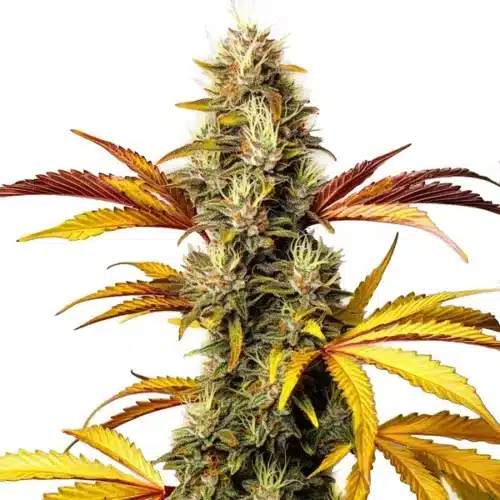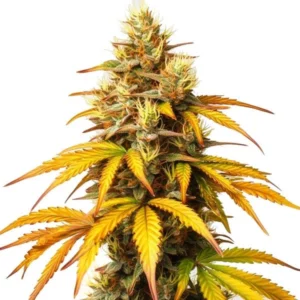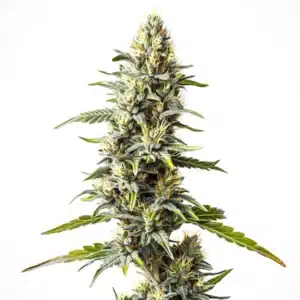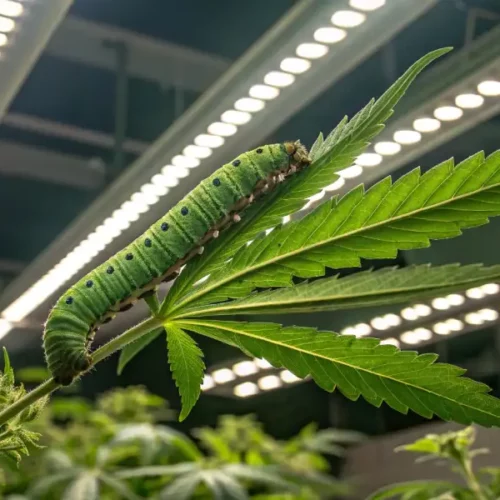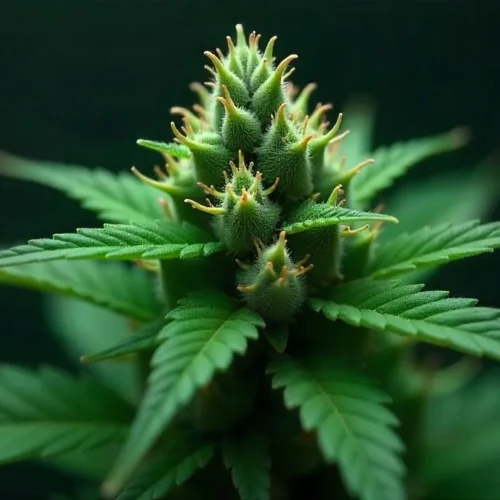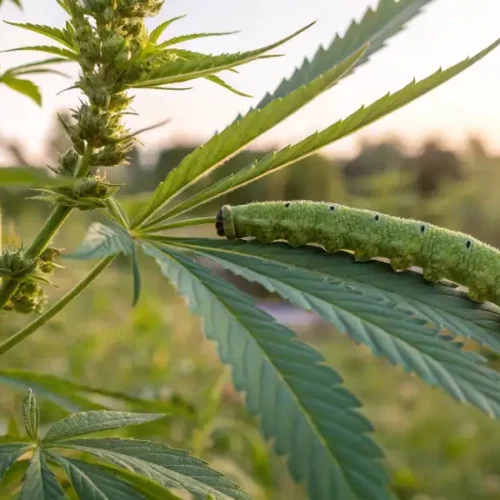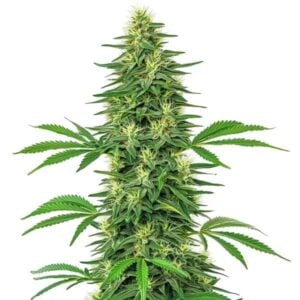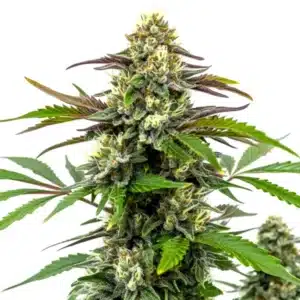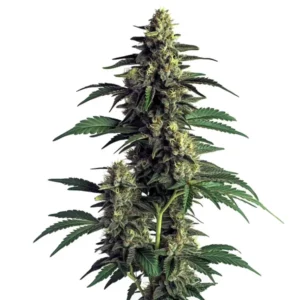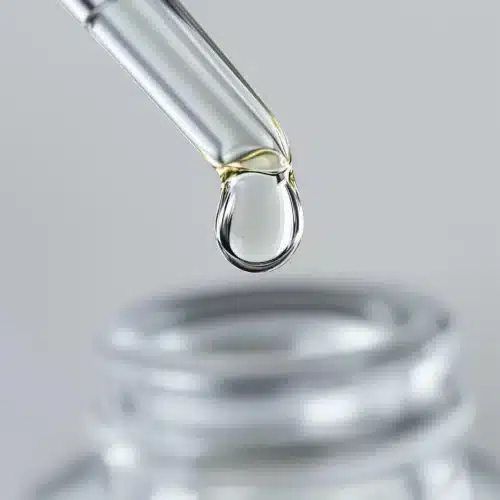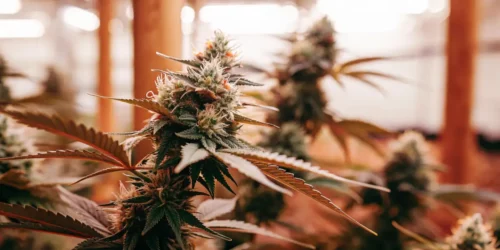Cannabis cultivation enthusiasts often share a common goal: to maximize the potential harvest. One of the critical aspects of achieving this is identifying the gender of your plants early in their life cycle. This knowledge allows for effective management and enhances the overall success of your growing efforts. In this guide, you’ll find clear and detailed steps to determine the sex of your cannabis plants with confidence.
Identifying male and female cannabis plants is essential not only for optimizing your yields but also for managing your growing space effectively. Male plants generally do not produce the desired flowers, so early detection enables growers to eliminate them before they can negatively impact the females. Let’s explore why this process matters and how you can get it right.
Recommended Strains
Alien OG
 THC: 22% - 28%
THC: 22% - 28% Type of seed: Feminized
Type of seed: Feminized Phenotype: Mostly Indica
Phenotype: Mostly Indica Day to flower: 8 - 10 weeks
Day to flower: 8 - 10 weeks
Alien Og Regular
 THC: 18% - 22%
THC: 18% - 22% Type of seed: Regular
Type of seed: Regular Phenotype: Mostly Hybrid
Phenotype: Mostly Hybrid Day to flower: 8 - 9 weeks
Day to flower: 8 - 9 weeks
Why Identifying the Gender of Cannabis Plants is Important
The significance of sexing cannabis plants is vital for both beginners and seasoned growers alike. Female plants are the ones that produce the sought-after flowers, while male plants create pollen responsible for fertilization, leading to seed production. Therefore, removing male plants promptly can prevent them from interfering with your goal of maximizing flower harvests.
Additionally, identifying the sex of your plants early can lead to a more efficient use of resources. By eliminating male plants, you can ensure that light, nutrients, and space are directed solely towards the females. This practice is essential for maintaining a healthy and productive garden environment, which ultimately enhances your overall yield.
Recognizing Male and Female Cannabis Plants
While sexing cannabis plants might seem daunting initially, it becomes much more manageable with consistent observation and a bit of practice. Typically, male plants develop small, round sacs resembling tiny grapes, while female plants showcase distinctive structures called calyxes with tiny hairs, known as pistils. Knowing what to look for is crucial for making swift and informed decisions in your garden.
During the pre-flowering phase, which typically occurs between 4 to 6 weeks after planting, the sex characteristics begin to manifest. This is the window of opportunity where careful observation can make all the difference in how you manage your plants moving forward. It pays to familiarize yourself with the particular characteristics of each sex, so you can identify them with ease as your plants mature.
Promos & Deals
Steps for Early Gender Identification in Cannabis Plants
Once you understand the importance of recognizing plant gender early, it’s time to dive into the practical steps for doing so effectively. One key aspect is to monitor your cannabis plants regularly, especially as they reach the pre-flowering stage. Pay close attention to the nodes where branches meet the stem, as this is where the sex indicators will appear.
Being proactive during this critical phase greatly aids in managing your garden. Regular inspections can help you notice subtle changes and determine the gender before it’s too late.
Key Characteristics to Observe
- Male Plants: Look for small, round sacs that resemble tiny grapes or balls. These are the pollen sacs that will open to release pollen.
- Female Plants: Seek out structures that appear as small hairs (pistils) emerging from a calyx. These will evolve into the buds you want to cultivate.
- Hermaphrodite Plants: Sometimes, you might encounter plants showing traits of both sexes. This condition complicates things and requires careful management to avoid pollination.
Recognizing these indicators helps cultivate a well-managed garden. The earlier you can accurately identify the plants, the better prepared you will be to provide the best conditions for your females to flourish.

Signs of Male and Female Cannabis Plants
To simplify the sexing process, becoming familiar with specific visual cues is beneficial. Male plants typically reveal signs earlier than females during the pre-flowering stage. As soon as four weeks of growth are reached, you may start observing the pollen sacs form.
However, keep in mind that various cannabis strains can exhibit different growth patterns. As you gain experience, you’ll develop an instinctive sense of how to distinguish between the genders more quickly. The key is practice—don’t rush the process, and take the time to familiarize yourself with your plants.
When to Observe Your Cannabis Plants
Timing is everything when it comes to successful sexing. As previously mentioned, most growers will examine their plants around the four to six-week mark. This is typically when the gender characteristics start to present themselves.
Environmental factors such as temperature, humidity, and light can also play a significant role in how quickly plants show their gender. If your plants are growing in optimal conditions, it’s essential to stay diligent with your checks and note any changes. Keeping a consistent observation schedule allows you to catch those early signs before they evolve into something more significant.
What to Do After Identifying Plant Gender
Once you have determined the sex of your cannabis plants, the next steps are crucial. Should you find male plants, it’s imperative to act swiftly to remove them from your garden. Allowing them to remain can result in unwanted pollination, which leads to seeds instead of the flower production that’s generally sought after.
For the female plants, your focus should shift to providing them with optimal conditions for growth. This means paying attention to your nutrient management, proper watering, and ensuring they obtain adequate light to promote flowering. Creating the best environment for your females is essential for achieving a bountiful harvest.
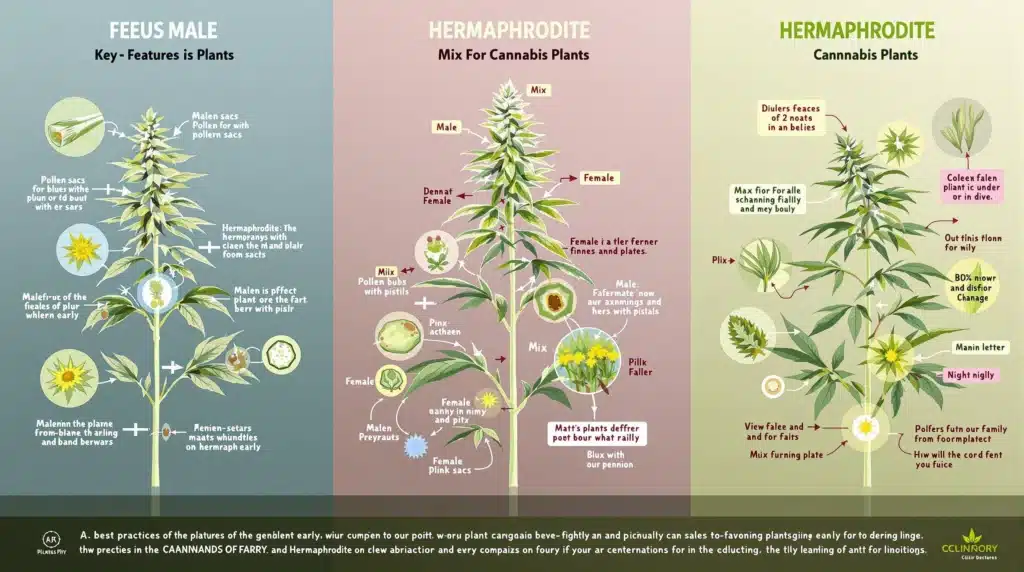
How to Safely Remove Male Plants
When it comes to removing male plants, ensure you handle them with care to prevent any pollen from spreading throughout your garden. If possible, cut them at the base while keeping the pollen sacs intact until they can be safely disposed of away from the other plants. This method preserves the integrity of your female plants and avoids accidental fertilization.
If you’re sensitive to pollen, don’t forget to wear gloves while handling. Being cautious during this process is a simple yet effective way to maintain a clean and productive garden environment.
Avoiding Common Mistakes During the Process
Even the most seasoned cultivators can stumble into common pitfalls while sexing cannabis plants. One prevalent mistake is prematurely removing potential female plants. Exercise patience and wait for clearer signs before making any decisions.
Another common error is the lack of consistent monitoring. Creating a routine for checking your plants, whether daily or every few days, is essential for staying on top of their development. This diligence ensures you’re well-informed of any necessary adjustments in care as the plants progress.
Incorporating Technology into Your Growing Practices
If you find it challenging to identify plant gender using traditional methods, you might want to consider utilizing modern technology. Some growers have started employing apps or monitoring devices designed to assess plant health and growth. While there may be an initial investment required, such technology can significantly simplify the gender identification process.
If you favor traditional methods, marking your plants with labels as you identify their genders can be extremely helpful for maintaining organization. This practice can also assist with more effective follow-up checks as you monitor growth over time.
Frequently Asked Questions
When do cannabis plants typically display their gender characteristics?
Cannabis plants usually show their gender traits around four to six weeks into the vegetative growth phase. However, this can vary based on specific strains and environmental conditions.
Is it possible to determine the sex of a cannabis plant from the seeds?
No, you cannot identify the sex of cannabis plants from their seeds alone. The only accurate way to ascertain their gender is by observing the growth during the pre-flowering stage.
What consequences arise from allowing a male plant to flower with female plants?
If male plants are allowed to flower amongst female plants, it will lead to pollination, resulting in seed production. For growers focused primarily on flower yield, this outcome is generally undesired.
Do certain strains display gender characteristics earlier than others?
Yes, some cannabis strains exhibit gender characteristics sooner than others. Indica varieties, for instance, may show their traits earlier in the growth cycle compared to sativa strains. Being aware of your specific strain can help you plan your observations more effectively.
How should I respond if I discover a hermaphrodite plant?
If you encounter a hermaphrodite plant, the most prudent course of action is typically to remove it from the garden to prevent pollination of female plants. Your decision may depend on the extent of pollen production and the resilience of the other plants in your garden.
Mastering the ability to identify the gender of cannabis plants early is an invaluable skill for any grower. By sharpening your observational skills and familiarizing yourself with the signs and indicators, you’ll be well-prepared to cultivate a thriving garden. By following these guidelines, you can help ensure your female plants thrive while minimizing any unwanted male plants that may hinder your success.
Remember, like any other skill, perfecting the art of sexing cannabis plants takes practice and patience. As you grow more accustomed to your plants, you’ll find yourself making quicker, more accurate decisions that will undoubtedly lead to a more rewarding growing experience.


